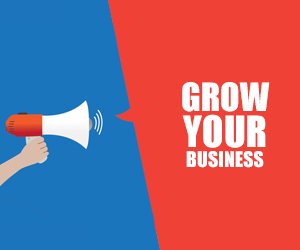There’s a plethora of science, pseudoscience, spin and fake news about target marketing.
Yes – you clearly need to identify your audience, speak to them and make them an offer they can’t refuse.
No – you don’t just target that demographic. You pay to attempt to try to reach that subset, but the data’s never 100% accurate.
The reality is that you are paying for a campaign that will be communicated to 2 sets of people (if we were in a meeting, we’d have the flipchart out and the Venn Diagram magic markers on hand!).
People who want you product and people who don’t.
- The people who want your product can be split into 3 groups: Past, existing and future.
- The People who don’t want to buy you product are: Non-customers. Let’s not throw them away, we have a cunning plan later for how to communicate to these guys.
So, let’s see how we can communicate to these 4 distinct groups to do what we need to do: make money, build loyalty and make a difference (change the world – come on, think big!).
The existing customers are the low hanging fruit, they are the most engaged and enthused generally. Past customers might be the fruit that’s a bit harder to reach. A tone of ‘what’s changed’ and ‘why we’re better now’ helps to bring them back/re-enthuse them. Future customers are often referred to as ‘the golden apple’. Market share grows when these guys start to buy from us.
The Tea Analogy (You will, you will, you will. Go on, go on, go)
Do you like to drink tea? Yes or no. If yes, do you fancy a brew? You already have one? Do you want another? Not right now? Dilema. Should I be asking you again if you want a brew? If I do, you’ll throw biscuits at me. If I continue, who knows what you’ll do! I can’t keep asking one question even if it’s to a huge tea drinker like myself. I can’t be a one-trick pony. If I want you to keep listening to me, I have to talk about more than just the brew. What’s the conversation you could have whilst having the brew? This is the conversation that your audience buys into to whilst they have their existing brew and get a thirst for the next one. Your conversation needs to be on a more generally engaging subject than just the brew or you will lose them.
Past
- ‘What has changed’ communication
- What are the new developments
- Return customer deals
- Savings potential
- Benefits to product/service
- Reviews by opinion leaders, peers, customers
- Talk about the increases in goodwill, trust, confidence and customer satisfaction
- Wax lyrical on how the product/service reduces stress, saves time, offers additional ‘over the top’ benefits, generates more cash or solves a huge problem
- Discuss how customer loyalty has its own rewards
- Make brand ambassadors (foot soldiers) out of past customers and enthuse them to return
- Reasons to return
Existing
- Educate and enthuse
- Look beyond a sale to case studies, testimonials, endorsements, check-ins, likes, shares, follows and star ratings
- Recommend/refer for peer-to-peer/word of mouth
- Incentivise and cross sell (cross fertilisation)
- Offer loyalty discounts
- Offer kickbacks
- General subject communication (the cup of tea analogy) above
- Include the product/service in the general conversation
- User and end user testimonials and referral-based marketing schemes
- Discuss savings potentials
- Be the reputable source
- Encourage debate, comment and dialogue
- Bring industry news and legislation changes into your communication mix
- Look for insights
- Reasons to stay
Future
- Forthcoming legislation changes e.g. GDPR
- Effects of future changes, fluctuations, market developments
- Brand ethos, history, mission statement, positioning in the marketplace
- Reputation building and familiarity growing over a stretch of time
- Digital footprint
- Place the brand ethos into the consciousness and subconsciousness areas of the mind
- Product/service information, application, detail, history
- Benefits to users/end users
- Efficiencies
- Transparency in marketing product/service
- Savings potential – costs Vs Savings analysis (Cost benefit analysis)
- Reasons to change
Non-Customer
- Is the product/service message clear and do they understand what that is?
- Can they identify with the target market/key audience demographic?
- What kickbacks will enthuse them enough to refer you?
- How can you engage them enough to connect with their contacts?
- What potential new customers do non-customers know?





